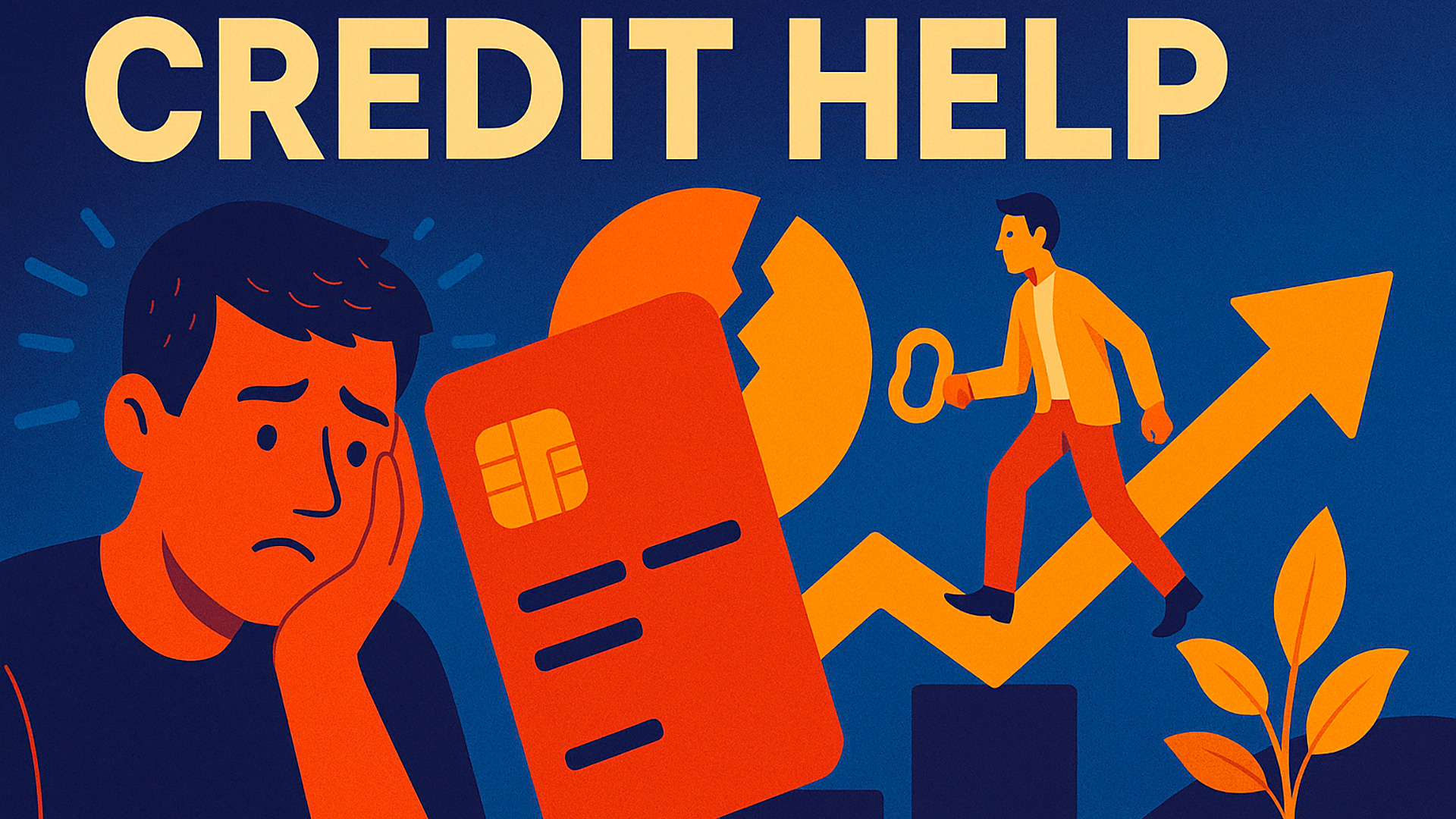Turning Borrowed Money Into a Lifeline: How Smart Credit Choices Create Stability

Most people hear the word “credit” and think of stress, debt, or financial traps. But credit, when managed strategically, is not an enemy—it’s a tool. Used correctly, it can rebuild stability, unlock opportunity, and even create long-term financial freedom. The idea of credit help goes far beyond debt relief or quick loans. It’s about understanding how credit works, how to use it responsibly, and how to transform borrowing into a stepping stone rather than a setback. For millions around the world, credit has become a bridge between crisis and recovery, between uncertainty and growth.
The Role of Credit in Modern Financial Life
Credit touches every part of our economy. From buying homes and cars to funding education or medical emergencies, it often acts as the silent foundation behind progress. But not all borrowing is equal. The difference between success and failure lies in understanding purpose and planning. People who use credit help as a structured financial aid—not as emotional spending—find that loans and cards can enhance rather than harm their finances. The secret is alignment: ensuring every borrowed dollar has a reason, a timeline, and a repayment plan.
When Credit Becomes the Problem
Many fall into debt traps not because they borrow, but because they borrow without intention. Emotional purchases, unexpected expenses, or high-interest debt accumulation can quickly turn manageable credit into a burden. When monthly payments begin to exceed income, stress and avoidance set in. Recognizing this moment early is crucial. Seeking credit help—through budgeting, refinancing, or financial counseling—can prevent a temporary issue from becoming a permanent one. The path back to control begins with awareness, not shame. Debt is a condition, not a character flaw, and it can be treated with structure and time.
Table: Common Misuses of Credit and Corrective Actions
| Misuse | Consequence | Corrective Action |
|---|---|---|
| Using credit for non-essential spending | High balances, wasted interest payments | Limit cards to needs, not wants |
| Paying only minimum balances | Debt grows faster than repayment | Pay more than minimum or consolidate debt |
| Ignoring high-interest rates | Wasted income on interest | Refinance or transfer balance to lower rate |
| Relying on multiple cards | Loss of payment control, credit score drop | Prioritize paying off one card at a time |
| Borrowing without purpose | Chronic debt, no measurable benefit | Borrow only for investments or stability |
Reframing Credit as a Financial Partner
To truly benefit from credit, you must change how you view it. Credit is not free money—it’s borrowed trust. Banks and institutions extend credit based on your reliability. If used responsibly, this relationship strengthens over time and unlocks better opportunities: lower interest rates, higher limits, and faster loan approvals. In that sense, credit becomes a reputation system. People who consistently demonstrate control are rewarded with access to resources that fuel major life goals. That’s the real power of credit help—it’s about building trust, not dependence.
Practical Steps to Make Credit Work for You
Turning credit into a benefit requires structure. Here’s how to make your borrowing habits productive instead of harmful:
- Set a clear purpose: Every loan or card should have a defined goal—education, home improvement, or debt consolidation—not vague “just in case” spending.
- Budget before borrowing: Knowing exactly how repayments fit into your income avoids overextension.
- Track and automate payments: Automation prevents late fees and protects credit history.
- Build an emergency fund: Having savings reduces reliance on borrowing during crises.
- Focus on high-impact debt: Use credit strategically for investments that create long-term value—like certifications, tools, or small business growth.
Each of these steps is simple but powerful. Together, they shift your relationship with borrowing from reactive to proactive. That’s how real credit help transforms lives—not through quick fixes, but through long-term clarity.
Table: Productive vs. Harmful Uses of Credit
| Productive Use | Result | Harmful Use |
|---|---|---|
| Taking a loan for education or certification | Increased income potential | Financing vacations or luxury items |
| Consolidating high-interest debts | Lower monthly payments and simplified management | Opening new cards to pay old ones |
| Investing in small business or equipment | Revenue generation and growth | Gambling or speculative spending |
| Building credit history through responsible use | Higher credit score and better rates | Ignoring bills and missing payments |
| Using credit to stabilize emergencies | Short-term protection, long-term recovery | Using credit as permanent income replacement |
Real-Life Example: From Crisis to Control
Consider Lena, a 40-year-old restaurant owner who nearly lost her business during the pandemic. Facing months of closure, she accumulated $25,000 in credit card debt trying to keep operations alive. Instead of giving up, she sought credit help through a local small business program. With guidance, she refinanced her debt into a lower-interest SBA-backed loan and used a portion of the funds to launch a delivery service. Within a year, her business returned to profit. The same credit that once threatened her survival became the key to her recovery. Her story shows that debt, when directed with purpose, can become an instrument of empowerment.

How to Avoid the Debt Trap
The line between good credit and bad debt is thin—but clear. Avoiding the trap requires constant vigilance. Here are warning signs that borrowing may be turning harmful:
- Using new loans to pay off existing ones regularly.
- Carrying balances on multiple cards with no repayment plan.
- Feeling anxiety or denial when thinking about bills.
- Having no emergency savings or budget structure.
- Consistently spending more than you earn.
If any of these patterns sound familiar, it’s time to reassess. Contacting a financial counselor or credit advisor early can help realign goals. True credit help often begins with an outside perspective—a professional who can see patterns and propose practical solutions you might overlook.
Credit as a Path to Rebuilding
Credit can also serve as a recovery tool after financial hardship. Many people fear borrowing again after bankruptcy or default, but carefully managed credit is part of rebuilding. Secured credit cards, credit-builder loans, and small installment plans help reestablish trust with lenders. Consistent payments over time prove reliability and restore confidence. This gradual process allows individuals to re-enter the financial system stronger and wiser. Learning from past mistakes doesn’t just fix a score—it builds resilience. Effective credit help equips people to navigate life’s challenges without falling into the same pitfalls twice.
Real-Life Example: Rebuilding After Default
Daniel, a construction worker from Texas, filed for bankruptcy after a job injury left him unable to work for months. Once back on his feet, he opened a secured credit card and limited himself to $100 monthly spending, which he repaid in full each month. Within 18 months, his credit score rose by nearly 120 points. He later qualified for a car loan at a fair rate and used it to commute to better-paying contracts. His disciplined use of credit help didn’t just repair his finances—it rebuilt his confidence.
Psychology and Motivation in Financial Recovery
Debt often carries emotional weight—guilt, embarrassment, or fear. Overcoming these feelings is part of the healing process. Focusing on progress instead of perfection keeps motivation high. Celebrate small wins: a paid-off card, a budget followed for six months, or a successful negotiation with a lender. Visualization helps too. Imagine what financial freedom looks like—less stress, more choices, and stability for your family. Motivation is fuel for consistency, and consistency is the true engine of credit help.
Long-Term Financial Habits for Sustainable Success
After regaining control, maintaining it becomes the next challenge. Here are long-term habits that reinforce stability and prevent relapse:
- Continue budgeting even when comfortable: Wealthy people budget because it keeps control, not because they’re struggling.
- Save automatically: Build both emergency and opportunity funds.
- Review credit reports yearly: Correct errors and monitor for fraud.
- Borrow only with purpose: Each loan should serve a clear goal with measurable return.
- Educate yourself: Stay updated on credit trends, interest changes, and consumer protection laws.
Long-term prosperity comes not from luck but from discipline and awareness. Each positive decision builds a stronger foundation for the next. Those who internalize this mindset rarely fall back into unmanageable debt.
Transforming Credit Into Opportunity
Credit is not the villain of the financial story—it’s a character that responds to how you treat it. The key to success lies in control, purpose, and understanding. Real credit help is not about quick debt elimination but about building a sustainable relationship with borrowing that supports your goals rather than undermines them. From Lena’s restaurant revival to Daniel’s personal recovery, real stories prove that credit, when handled with wisdom, can lift you from instability to independence. The next chapter of your financial story begins with a single decision: to use credit as a tool for building, not for breaking. With structure, patience, and vision, borrowed money becomes the bridge to lasting freedom.
